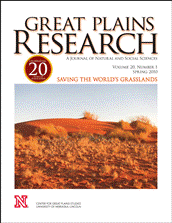Center for Great Plains Studies

Great Plains Research: A Journal of Natural and Social Sciences (through 2013)
Date of this Version
Spring 2000
Document Type
Article
Abstract
One might expect a book on American Indian historical demography to be a lugubrious recitation of catastrophic losses accompanied by tiresome moralizing, but this slim volume gives us ethnohistory at its best. In place of thick descriptive narrative, Shoemaker offers us a refreshingly concise empirical analysis. Conclusions are not simply assertions, but concise statements supported by data presented in clear tables and graphs.
Shoemaker steers clear of the 1492 population debate in order to focus on demographic recovery, which occurred in the twentieth century after the aggregate US Indian population reached a nadir of 237,000 in 1900. She does this through a comparative examination of the separate population histories of five nations: the Senecas, Cherokees, Red Lake Ojibways, Yakamas, and Navajos.


Comments
Published in Great Plains Research 10 (Spring 2000). Copyright © 2000 The Center for Great Plains Studies, University of Nebraska–Lincoln. Used by permission. http://www.unl.edu/plains/publications/GPR/gpr.shtml